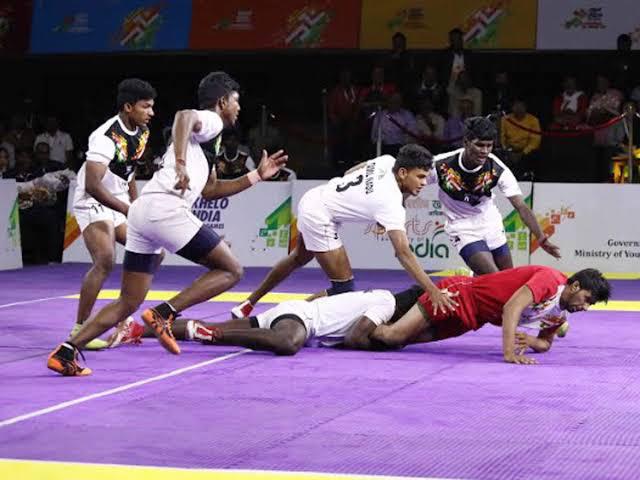
In any striking-based martial arts such as Muay Thai, switch-hitting is a difficult skill but a tremendously valuable one to learn. Seamlessly changing your stance midway through a round completely changes the dynamic of a fight. For your opponent, strikes come from different angles, movements are reversed and the shots that they were once landing with ease are suddenly no longer effective. The sudden shift can take valuable seconds, if not longer, for them to notice and make the right adjustments.
It is incredibly rare for someone to be able to fight Muay Thai effectively in both stances. For many, it takes years to just get proficient in their natural stance and the idea of starting again from scratch can stop them from attempting to develop this skill altogether.
Luckily, you don’t need to be a master at fighting in your opposite stance to switch-hit in fights. All you need is to train a handful of simple and effective combinations in your alternate stance to have a huge effect on a fight. In fact, switching and landing one or two simple combinations before switching back can often be more effective than switching stances long term because, by the time your opponent has adjusted their body position to successfully counter your new stance, you’ve already switched back, leaving them exposed to your more adept weapons.
In this article, we’ll give you 4 switch-hitting combinations that you can use to quickly disrupt your opponent’s rhythm and land easy scoring shots before they even notice the shift. While it can take a while to get the hang of throwing anything in the opposite stance, repeatedly training these simple combinations will open up a whole new world of Muay Thai for you, so we recommend drilling them until they become second nature.
1) Switch-Jab, High Kick
This switch-hitting technique is so simple that it barely qualifies as a combination. Alternating between this and your regular switch kick will confuse your opponent. It will throw off their timing and make them second guess themselves every time they see you skip your opposing foot forward.
To set up this technique, throw several switch kicks to your opponent’s body until they begin to predict the strike. Once they begin to pre-emptively block the kick at the sight of your foot shuffle, you’ll simply flick your lead hand at their face, pushing them back down onto two legs. As they lower their block to defend your punch, fire off the kick. They won’t be able to defend it while their foot is falling, which results in an easy score.
Just make sure not to put too much power into your jab or make any changes to your foot position in order to land it more cleanly. This combination is about the kick and so your feet will remain in the same position you would use for a regular switch kick, with your lead foot outside of theirs, to maximize the effect of the scoring strike.
2) Switch-Jab, Cross, Hook, Roundhouse Kick
If your opponent is able to catch your switch kick whenever you throw it, this switch-hitting combination is a great way to tie up their hands and makes it nearly impossible for them to scoop up your shin when it connects.
After a few unsuccessful switch kicks, when you know, they are prepared to catch, switch your stance so that your lead foot is outside of theirs and throw a cross right between their guard. Then, step and pivot 90 degrees around the outside of their foot as you hook, setting yourself off of the centreline where they cannot hit you back. Then step into a powerful rear kick before resetting back in your preferred stance.
The beauty of this simple switch-hit combination is that your punches will tie up their hands, making catching difficult, while the pivot makes it so that you are kicking across the front of their body, rather than through their ribs. Due to the fact that your foot won’t be traveling past their armpit when you kick, they won’t be able to capture your leg even if they do miraculously find the right timing to attempt a catch.
3) Switch-Jab, Hook, Pivot
This switch-hitting combination can be used interchangeably between the first two as a way of creating space before you execute a kick. It is also an incredibly valuable technique to use when you find yourself and your opponent fighting at the edge of the ring with your lead side pushed against the ropes and you want to reset in the center.
When you begin to feel like there’s no space left to circle out on your lead side, quickly throw a switch jab to disrupt your opponent’s rhythm and create an opening. As you move, fire off a quick jab and lead hook to disrupt your opponent’s focus, then use a slight angle cut and pivot out to trap them in the corner.
For this combination, you aren’t trying to knock your opponent out with the two punches. It is more important to move into the center position, so simply flick out the jab and hook as you step around your opponent. They aren’t supposed to knock them out, just push them into a defensive position and a potential opening for the kick.
4) Parry, Switch Kick, Cross, Hook, Roundhouse Kick
This combination is designed for getting outside of your opponent’s lead leg if you are both fighting in a mirrored stance, creating the opportunity to land two scoring kicks which will be difficult for them to defend.
As your opponent jabs, simultaneously parry and switch your stance so that your new lead foot lands outside of theirs. Immediately follow with a switch kick while the parry has off-balanced them and then land back in your orthodox stance. If you’ve moved correctly, you will be safely off-center while your opponent is standing in your pocket.
Immediately throw a cross hook combo as you step twice, further around their lead foot which will keep you out of the pocket as they turn to re-centre themselves. Then, still off-centre, fire off your roundhouse kick before resetting in your preferred stance.
Conclusion
Switch-hitting is a valuable yet challenging skill in Muay Thai, allowing you to disrupt your opponent’s rhythm and gain a tactical advantage. By mastering a few simple combinations, you can effectively utilize stance changes to create openings and land impactful strikes. With consistent practice, switch-hitting can become a powerful tool in your arsenal, offering fresh perspectives and opportunities to outmaneuver your opponents in the ring.
You may also like:
An Updated Guide To The Muay Thai Scoring Systems Of Today
In Muay Thai, kicks are some of the most powerful and effective weapons. A well-timed roundhouse can break rhythm, score points, or end a fight. But kicks also come with risk. When you throw a…
Fear is a natural part of competition, especially in combat sports like Brazilian Jiu-Jitsu (BJJ), Muay Thai, boxing, and mixed martial arts (MMA). Whether you’re a first-time white belt entering your local tournament or a…
Everyone has a natural fighting style. Some instinctively look to bombard opponents with volume, while others prefer a more cautious approach. Some people feel more comfortable throwing strikes at attackers, while others prefer to wrestle…
If you’ve ever watched a fight and thought, “Wow, this guy never backs off?” You’ve witnessed pressure fighting in action. Pressure fighting in martial arts is the art of making your opponent miserable with constant…
Hard sparring sessions in martial arts can make you feel like you’ve just walked through a brick wall. You’ve given it your all, and your muscles are sending you a strongly worded memo saying that…
Nothing feels as rewarding as landing a well-executed strike that finishes the match or secures a win. The knockout is the crème de la crème of combat sports like mixed martial arts (MMA), Muay Thai,…
Bullying remains a serious problem worldwide. Over 30% of students globally have been victims of bullying, according to a UNESCO report. The consequences of bullying aren’t trivial either, with victims often feeling humiliated and helpless….
The check hook is one of the most effective weapons you have against aggressive opponents who want to run you over. It’s a technique that remains effective at the highest levels of boxing and mixed…
Getting stuck in side control is something many Brazilian Jiu-Jitsu beginners have in common. The bridge and roll is often the first reversal BJJ students learn, followed by basic bottom guard sweeps like the scissor…
Grip strength plays a crucial role in mixed martial arts (MMA) and many grappling styles like Brazilian Jiu-Jitsu and wrestling. It turns out that having a strong grip doesn’t just help you to open jars;…
Flexibility plays a crucial role in how well you can execute many fighting techniques. For example, you need a certain level of hip flexibility to throw high kicks in Muay Thai or to use the…
Martial arts training might be what you need if you’re interested in a more exciting way to rebuild that knee, shoulder, or back. Signing up for classes won’t automatically give you some magical ability to…





![[WATCH] IND vs SA 2025: Umpire Rohan Pandit down in pain as Sanju Samson drive hits knee](https://www.babu88sports.com/wp-content/uploads/2025/12/watch-ind-vs-sa-2025-umpire-rohan-pandit-down-in-pain-as-sanju-samson-drive-hits-knee-360x180.jpg)





























